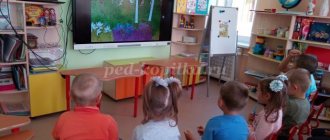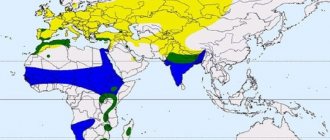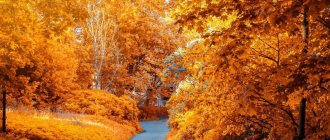Skeletal structure of birds
The skeleton of birds is strong and light. Bones fuse at an early age, providing strength. The low total mass is achieved by the tubular structure of the bones and the presence of air cavities.
The skull is similar in structure to that of mammals. The difference is the presence of a beak, a lighter box and larger eye sockets.
The structure of the spine is divided into sections: cervical, thoracic, lumbar, sacral and caudal. The greatest mobility is in the cervical region. The sacral and lumbar vertebrae are fused with the pelvic bones. The bones of the shoulder girdle are also fused, forming a strong support for the bones and muscles of the wings.
The sternum grows, forming a protrusion called the keel - the attachment point for the powerful pectoral muscles that ensure the operation of the wing.
The upper limbs have typical sections: humerus, ulna, radius, fused bones of the hand. Only three toes remain free.
The pelvic bones serve as support for the hind limbs. The ilia are fused to the complex sacrum, and the pubic bones are free, allowing large eggs to be laid.
The hind limbs are composed of typical bones. The tibia and fibula are fused. Three out of four fingers point forward, one back.
Lesson topic: “Birds” 1. Head Wings Legs Tail Body Structure of a bird 2. - presentation
Lesson topic: “Birds” 1
Head Wings Legs Tail Body Structure of a bird 2
We answer the questions How are birds distinguished from other animals? Can all flying animals be called birds? Do birds swim? Are there flightless birds? What types of feathers are there? What do birds eat? 3
Some birds cannot fly at all. Penguins live mainly in water. Their wings have changed into flippers, with the help of which they “fly”, although not in the air, but in the water. 4
Large running birds, such as ostriches, also do not fly. They are too heavy to fly. 5
Owl The owl's feathers are fluffy and soft. They help her fly not fast, but almost silently. 6
Hawk The hawk's feathers are much shorter and lie close to the body, which allows it to move quickly. 7
Woodpecker The feathers in the woodpecker's tail help both feed and sleep. Its tail feathers are hard, long, strong and elastic. A woodpecker will perch on a pine tree, not on a branch, but directly on the trunk. It will cling to the bark with sharp claws and lean on its tail. Not a tail, but a real stand. 8
Why do birds need feathers? Only birds have feathers. No other animals have them! Bird feather is light and very strong. If birds didn't have light feathers, they wouldn't be able to fly. And in general, a bird cannot do without feathers. These are her “clothes”. Feathers save the bird from scratches and bruises, from cold and heat, from getting wet and dry, and make the surface of the bird smooth. They constantly renew their plumage. They will shed some of the old feathers and quickly put on new ones. It is easy to notice that different birds have different feathers. It depends on your lifestyle. 9
Feathers The flight feathers of the wings and the tail feathers of the tail play a major role in the flight of a bird. Cover feathers are the feathers that cover the entire body of a bird. They form a streamlined surface, facilitating the flight of the bird. DOWN feathers are soft and fluffy located under the outer feathers. Between them there is a lot of air, which does not conduct heat well. Down feathers protect birds from overheating and cooling. 10
Because birds spend a lot of energy when flying. They should weigh as little as possible. Their food should be rich in nutrients and easy to digest. eleven
Guess by their beaks what and who do these birds eat? Now let's check. Did you guess right? 12
1 group of birds is called granivores. Granivorous birds have a short and strong beak. They feed on hard seeds. nutcracker crossbill bullfinch 13
Group 2 of birds feeds on insects and are called INSECTIVORE. Insectivorous birds are distinguished by a thin, elongated beak with which they capture insects. They eat a wide variety of insects, looking for them on trees and other plants. 14
swallow cuckoo 15
starling tit 16
Group 3 – BIRDS OF PREADY. Birds of prey have a special beak structure that ends in a powerful hook, and toes that end in powerful claws. All this helps them capture and hold prey. They feed on rodents, other birds, hares, etc. 17
18
Eagles are snake hunters, and in the south live eagles that hunt monkeys. 19
Group 4 can eat fish. They are called fish-eating swans 20
heron gull 21
Group 5 is very unique: they can eat anything. They are called OMNIVORES. Crow 22
Jackdaw Soroka 23
Sunbirds (hummingbirds) drink flower juices. A tiny hummingbird can drink twice its own weight in nectar in a day 24
This is interesting. The pika runs along the trunk from bottom to top. She was named that way because she squeaks all the time. 25
Crossbills are the only birds that hatch their chicks in winter. 26
The smallest bird in Russia is the wren. The wren weighs 6 times less than the sparrow. The kinglet is small, but he has a crown. 27
Birds have a hard time in winter. They often go hungry. During snowstorms and severe frosts, many birds die from hunger. Birds die especially often at the end of winter, when almost all the food everywhere has been eaten. 28
Feed the birds in winter! Let flocks of people flock to your porch from all over, as if it were home. Their food is not rich, A handful of grain is needed, One handful is not scary They will have winter. 29
It’s hard to count how many of them are dying. It’s hard to see. But in our heart there is also warmth for the birds. thirty
How can we forget, They could have flown away, But they remained to spend the winter Together with the people. Train the birds to your window in the cold. So that we don't have to greet spring without songs. A. Yashin 31
Test: “Birds” 1) How to distinguish birds from other animals? a) by scales; b) along the tail; c) by feathers; 2) What kind of feathers do not exist? a) flight feathers; b) helmsmen; c) downy; d) brake. 3) What do birds not eat? a) fish; b) nectar; c) snails; d) shells. 4) Why do they say about a goose: “like water off a duck’s back”, and about a chicken: “wet like a chicken”? 32
Migratory birds pictures for children
In winter, all insects hide from the cold, so birds that feed exclusively on this food have to fly to warmer climes. This group includes (we show pictures and study birds that migrate from one climate zone to another):
- The flycatcher is an inconspicuous bird, but very active. Catch prey on the fly by stalking it from an open hill or other hill.
Photos of baby flycatchers
- The nightingale is a noisy bird that likes to stage night concerts, imitating the calls of other birds. It feeds exclusively on insects.
Photo of Sylvia from the garden for children
- The starling is an inhabitant of many new buildings familiar to children - birdhouses. Try to settle closer to the person, as he loves to feast on fruits, grains and worms thrown to the surface of the earth during plowing. Sings well and can imitate the voices of other birds.
Baby starling photo
- The Rondines are previously settled rocky areas, but are well adapted to urban life. He is one of the skilled hunters who catch prey - insects - right in the air. A distinctive feature of swallows is the ability to build unique nests under the roof of a building. These nests consist of lumps of earth glued together by the bird's sticky saliva. On the inside there is soft bedding: grass, wool. A pair of swallows may return to the nest for several years in a row, repairing it if necessary.
Swallow picture for children
- The robin is a brightly colored bird that prefers to live on the surface of the ground, in thickets of grass or low bushes. It moves by jumping in search of worms, snails and other insects. Considered one of the loudest singers.
Photo of Robin for children
- The Shrike is a quiet bird that loves to feast on large insects. To make it easier for the prey to eat, she pricks it with plant thorns or barbed wire, and then pinches off small pieces.
Zhulan children's painting
- The lark is one of the loudest of the open country birds. The coloring helps it camouflage itself from predators, which blends into the general background of the grass and soil. Unlike other migratory birds, it feeds on the seeds of grasses and cereals (wheat, rye, buckwheat, millet), which in winter cannot be reached from under the snow cover.
Photo of a baby lark
- The kingfisher is a small bird that lives near bodies of water. A fisherman by nature, he feeds on small fish, frogs, freshwater shrimp and aquatic insects (he can eat a dozen fish in a day). In winter you need to fly away, because at this time the tanks freeze.
Kingfisher photo for children
Respiratory system
The ability to fly was determined by the special structure of the respiratory system. The lungs are spongy and consist of alveoli intertwined with capillaries.
Some bronchi, without dividing into bronchioles, extend beyond the lungs and form air sacs in the body cavity. These formations provide breathing during flight.
Air enters the bags when the wings rise in flight, and when lowered, it is squeezed out into the lungs.




